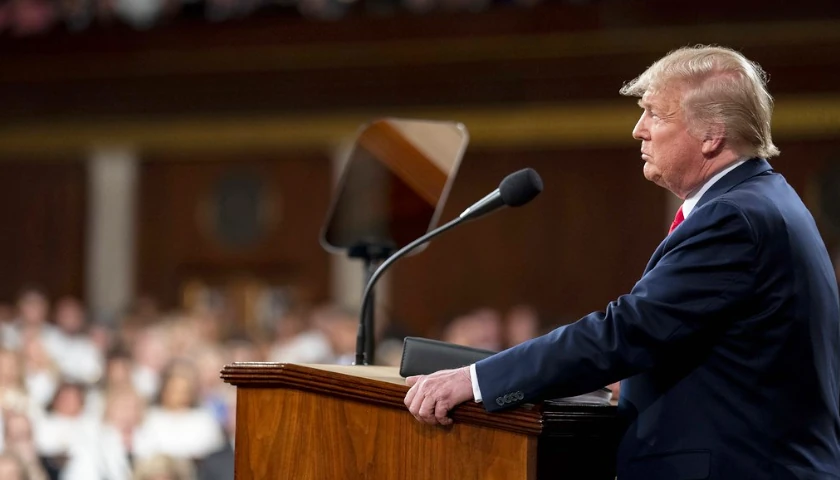by Keith Naughton
For the past several months, the public has been inundated by polls. national polls, state polls, issue polls. Yet, the 64-dollar question remains: Who is winning for President, Trump or Biden?
Over the past two months, the two presumptive nominees have swapped first place multiple times with Trump mostly in the advantage. So, the short answer is that the race is so close that neither is really ahead, at least we cannot say who is ahead in that national ballot test with high certainty. Trump is probably ahead very narrowly and has been since February.
In short, the polls are moving but the electorate is not. The reason why different results are coming out and why Biden comes out ahead in some polls has to do with the decisions and inferences by the pollsters, as well as the nature of polling and sampling.
To conduct an accurate poll, any credible pollster will try to construct a representative sample of the electorate. If you get the right mix of Republicans, Democrats, and Independents; the right mix of women and men; the right mix of urban, rural, and suburban voters, etc., you can expect to capture an accurate reflection of voting intentions and motivations. But, if your poll surveys 75 percent women and 25 percent men, you will have a bad poll.
When it comes to demographics, things are relatively easy. The American Community Survey provides a baseline for the gender, age, income, ethnic, and geographic distribution of the nation. After that, it gets tricky. People don’t vote in neat, proportional patterns. Age, income, and education are directly correlated with voter turnout. The bigger the number, the higher the likelihood of voting.
Using exit poll data, pollsters will increase the proportion of older, wealthier, and more educated voters. Of course, this does not always work. A big reason the 2016 polls were off the mark is that pollsters missed a bump in high school education-only voters, many of whom voted for Trump.
But generally, the demographics do not make a big difference. Outside of Black voters, the various demographic groups are relatively narrow in their preferences. In the most recent YouGov poll, Trump and Biden were tied with the largest advantage for Trump among 30–44-year-olds (plus-21 percent) and for Biden, 18–29 voters (plus 22 percent). Black voters were plus-58 percent for Biden, but their proportion of the electorate is just 10 percent. Neither age group composes more than 21 percent of voters.
The partisan differences, however, are huge. Trump is plus-88 percent with Republicans while Biden in plus-86 percent with Democrats. These lopsided vote shares make the partisan mix of any poll a major driver of the ballot test. Oversampling young voters by 2- or 3-points would help Biden, but not much, But, assuming an outsized Democratic turnout would easily put Biden in the lead.
Getting the Right Partisan Mix
Voter turnout by party has fluctuated in the past five elections, according to exit polls tracked by the Roper Center. From an evenly matched 2004 (37 percent Republican and 37 percent Democrat) to a high for the Democrats in the financial-meltdown 2008 election (39 percent Democrat, 32 percent Republican), the trend has been toward a more even turnout. Democrats had a 6-point advantage in 2012, 3-points in 2016 and just 1-point in 2020 (37 percent Democrat, 36 percent Republican). Given that trend and Biden’s terrible polling numbers, expectations should not be particularly high for the Democrats to return to the advantage of the Obama elections.
It is true that the Republican National Committee is a mess and claims from Lara Trump that the RNC will have a world-beating ballot security and turnout program should be treated as “I’ll-believe-it-when-I-see-it.” Several state parties are also disaster zones of bad leadership and weak fundraising. But people tend to turn out in Presidential elections without a lot of prompting. GOP organizational incompetence will cost something, but more than 1 percent of turnout seems unlikely.
Looking at the RealClearPolitics summary of polls, the polls that are showing Trump losing tend to oversample Democrats — that is to say the proportion of Democrats assumed to turn out is higher than the 2020 exit polls.
The Marist Poll has Biden up 3-points but assumes a 4-point Democratic turnout advantage. The March Quinnipiac Poll also had Biden ahead by 3-points, assuming a 3-point Democratic turnout advantage. The April poll reported a tie, however this poll assumed neither party would have an advantage. Morning Consult, Ipsos, and TIPP are the other polls that show Biden ahead in the last month, but do not make their partisan mix public.
Of the Trump-favorable polls, only one CNN Poll projects a Republican turnout advantage — and by just one-point. The NBC Poll has Trump up 2-points with an evenly matched turnout assumption. Emerson had Trump up 3-points, assuming a 2-point Democratic advantage. HarrisX had Trump up 3-points, also with a 2-point Democratic advantage in March. In one of the more surprising results the April Daily Kos/Civiqs Poll puts Trump ahead 1-point, despite a 5-point Democratic sample advantage.
A few other polls have some odd results. Rasmussen has Trump plus-8. Then again, Rasmussen had Biden plus-4 in November among a sea of polls with Trump leading. Every now and then even a good pollster will get an odd result. CNN has Trump ahead an outsized 6-points, but their polling has been problematic.
For Trump, the news is mostly good with polls showing Biden ahead likely oversampling Democratic voters. Even more impressive is that there are polls which assume a Democratic turnout advantage yet still show Trump in the lead. In no poll that shows even turnout is Biden leading. To be sure, the leads and percentage changes are very small. But, in a close race one percent could be the difference between the White House and the outhouse.
– – –
Keith Naughton, PhD., is a principal at Silent Majority Strategies, a regulatory and public affairs firm. He is the author of Washington Gold Rush: The Competition for Congressional Earmarks. He is a politics and public policy contributor.
Background Photo “Trump Rally” by Daniel Scavino Jr.





